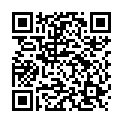|
|
|
| Module code: WIBb21-750 |
|
|
30SH (30 hours) |
|
5 |
| Semester: 7 |
| Mandatory course: yes |
Language of instruction:
German |
Assessment:
Exam
[updated 11.06.2025]
|
|
The total student study time for this course is 150 hours.
|
Recommended prerequisites (modules):
WIBb21-230
[updated 19.11.2025]
|
Recommended as prerequisite for:
|
Module coordinator:
Studienleitung |
Lecturer:
Lehrbeauftragte der htw saar
Lehrbeauftragte
Professoren der Fakultät
[updated 19.11.2025]
|
Learning outcomes:
After successfully completing this module students will:
be able to outline the basic subject areas of business informatics
be able to describe how business informatics is connected to related disciplines
be able to explain and classify the embedding of IT systems in an organization, its technology and with regard to a companys strategic goals
be able to visualize processes by means of common notations and classify these notations with regard to their intended use
be familiar with the basic types of applications,
as well as database systems and ERP.
be able to explain decision support systems, workflow and information management systems and differentiate between their applications.
[updated 11.06.2025]
|
Module content:
1. Purpose and function of information systems
2. History of business informatics
3. Database systems and data organization
4. Enterprise resource planning systems
5. Business process management tools
6. Modeling processes
7. Analytical information systems
8. Current trends
[updated 11.06.2025]
|
Teaching methods/Media:
Lectures, seminar-style teaching, digitally supported teaching, self-study
[updated 11.06.2025]
|
Recommended or required reading:
Laudon, K. C.; Laudon, J. P.; Schoder, D.: Wirtschaftsinformatik, 2. Auflage, Pearson Studium Verlag, 2009
Thome, R.: Grundzüge der Wirtschaftsinformatik: Integration der Informationsverarbeitung in die Organisation von Unternehmen. Pearson Studium Verlag, 1. Auflage, 2006.
Abts, D.; Mülder, W.: Grundkurs Wirtschaftsinformatik: Eine kompakte und praxisorientierte Einführung, Vieweg+Teubner Verlag; 7. Auflage, 2011.
Scheer, A. W.: Wirtschaftsinformatik Studienausgabe; 2. Auflage, Springer Verlag, 1998
Scheer, A.-W.: Wirtschaftsinformatik Referenzmodelle für industrielle Geschäftsprozesse, 7. Auflage, Springer Verlag, 1997
[updated 11.06.2025]
|

